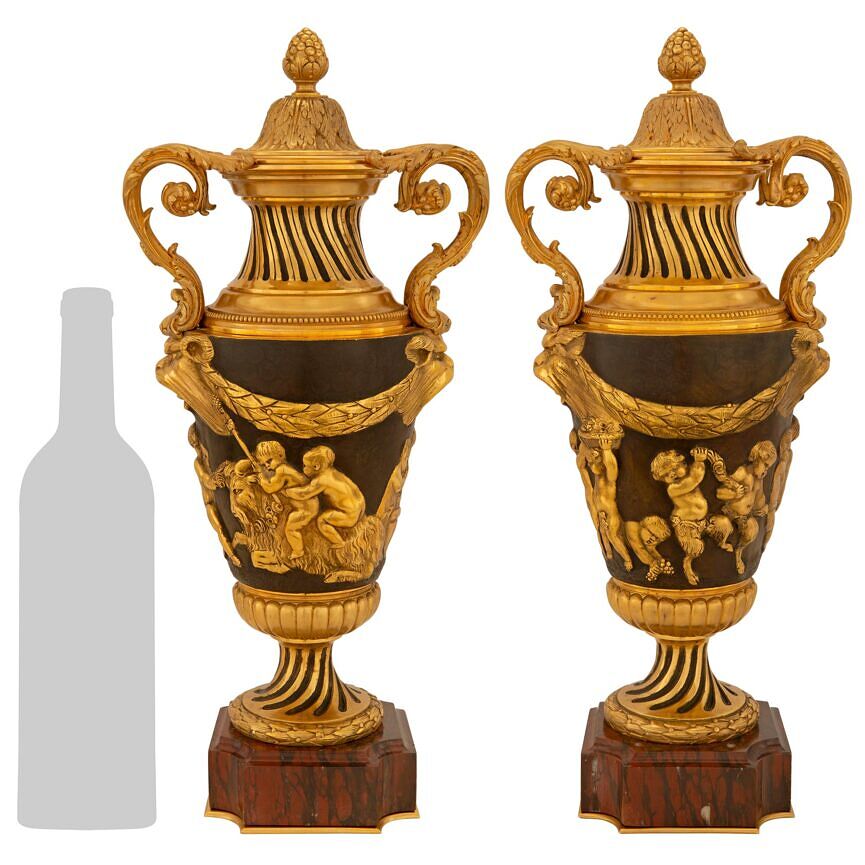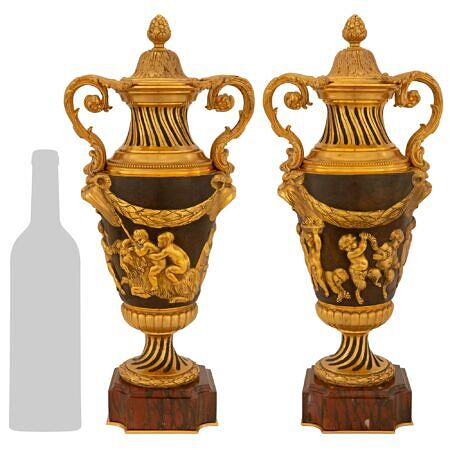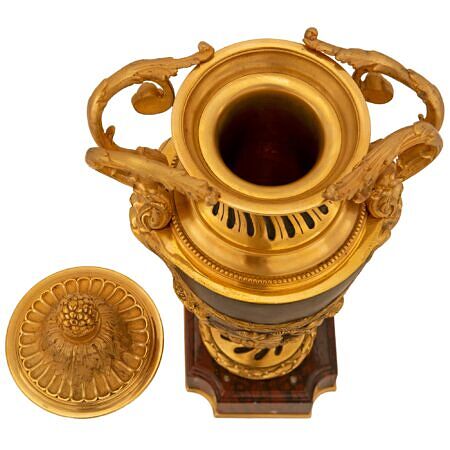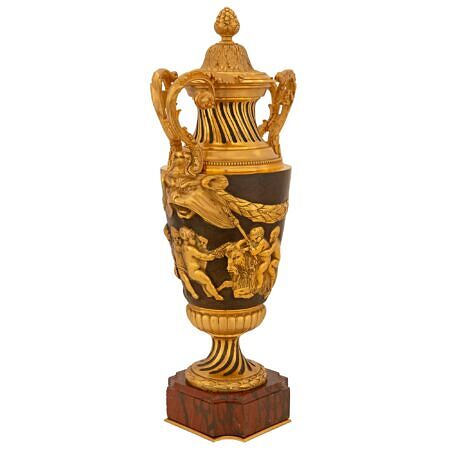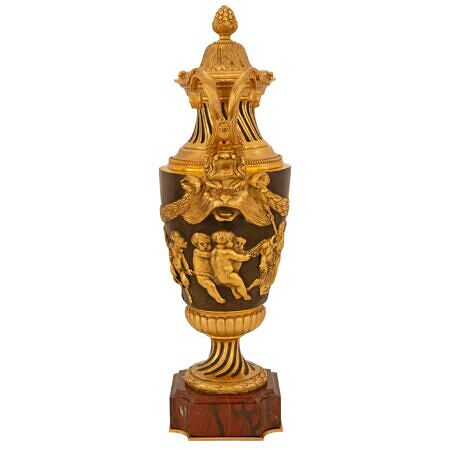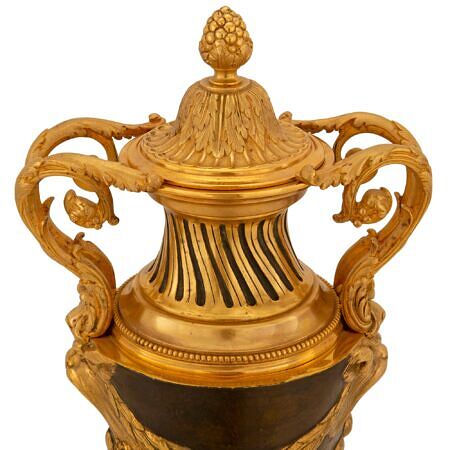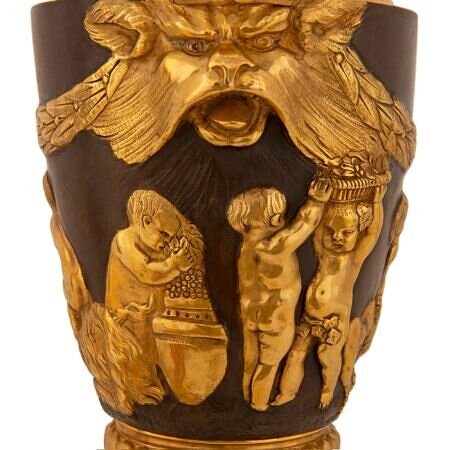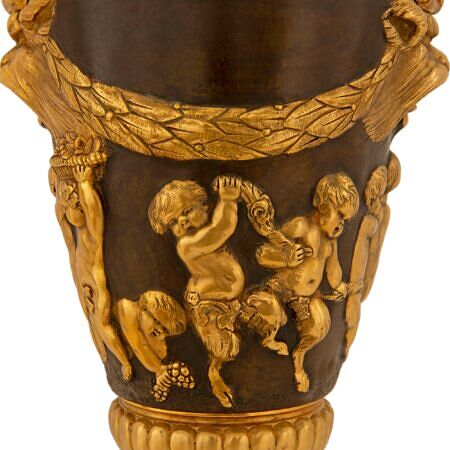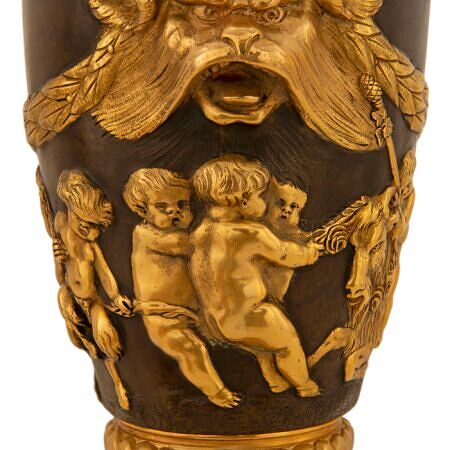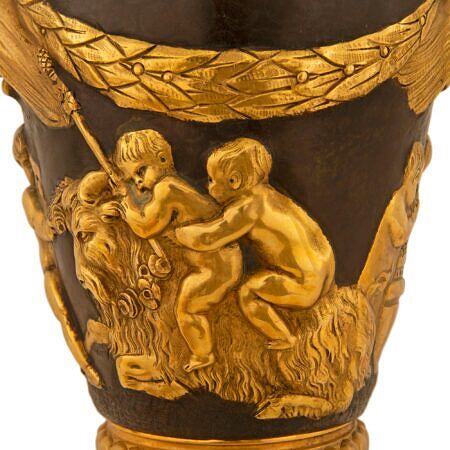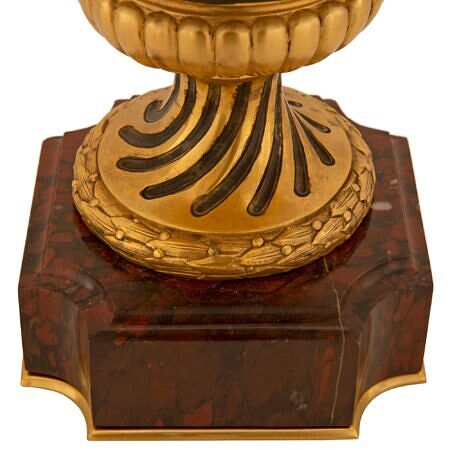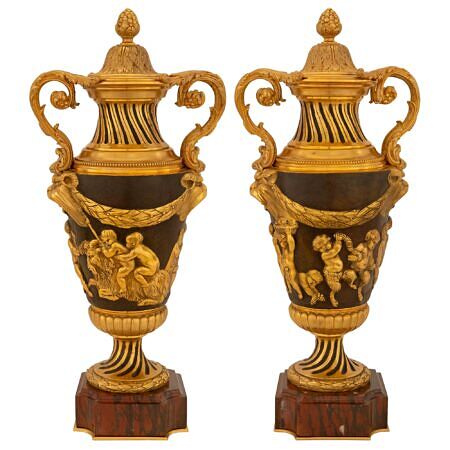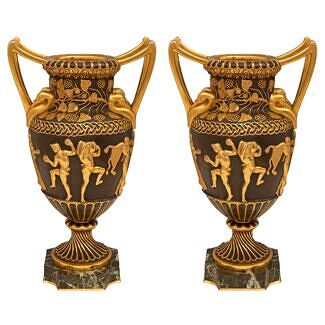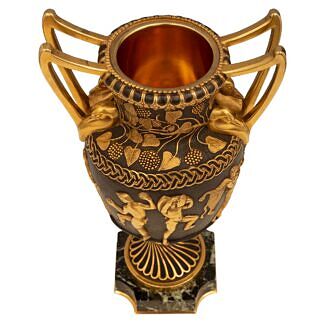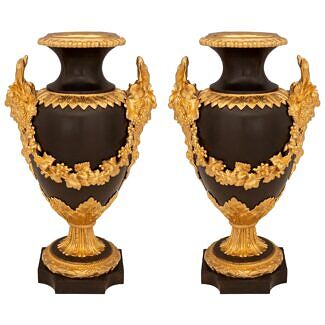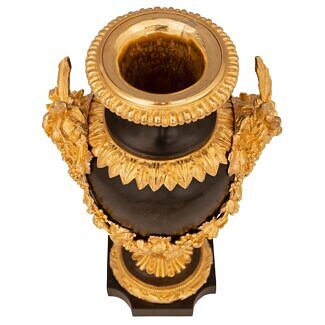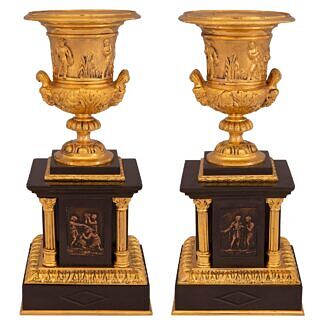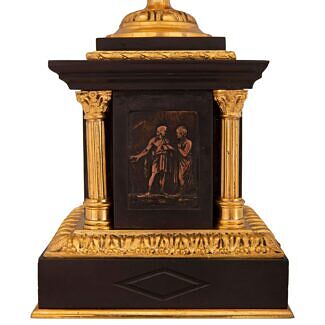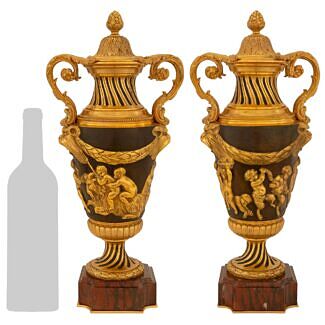A pair of French 19th century Neo-Classical st. ormolu, patinated bronze and Rouge Griotte marble lidded urns in the manner of Clodion and attributed to F. Barbedienne
An exceptional and very high quality pair of French 19th century Neo-Classical st. ormolu, patinated bronze and Rouge Griotte marble lidded urns in the manner of Clodion and attributed to F. Barbedienne. Each urn is raised by a Rouge Griotte... — Read More
An exceptional and very high quality pair of French 19th century Neo-Classical st. ormolu, patinated bronze and Rouge Griotte marble lidded urns in the manner of Clodion and attributed to F. Barbedienne. Each urn is raised by a Rouge Griotte marble base with concave corners, a wrap around mottled border, and bottom ormolu fillet. The ormolu socle shaped pedestal support displays spiral fluted patinated bronze designs and a richly chased wrap around berried laurel band below a fine reeded design. The patinated bronze body displays charming detailed Bacchanalian cherubs playing with blooming flowers and harvesting grapes with two riding a richly chased ram while holding a staff. Elegant scrolled foliate handles leading up each side above striking open mouthed animal masks connected by a swaging berried laurel garland. The lightly curved neck also displays most decorative spiral fluted patinated bronze designs all below the removable lid with wonderful acanthus leaf designs and a top berried finial which lifts off to reveal the finished inside.
Ferdinand Barbedienne (10 January 1810 – 21 March 1892) Barbadienne was a French renowned bronzier. Between 1850 and 1854 his firm , Barbedienne,, provided furnishings in the Renaissance Revival style for the Hôtel de Ville, Paris. They received numerous medals at the International Exhibitions, including medals in three different classes at the International Exhibition of 1862 in London. — Read Less
- Item # 13184
-
H: 17.75 in L: 7.75 in D: 5.5 in
H: 45 cm L: 20 cm D: 14 cm
- France
- 19th Century
- Marble/Stone, Ormolu, Patinated Bronze
-
Neo-Classical st. Read More
(Neo-Classical st.) -
One of the top design styles in modern interiors is Neo-Classical. Developed in the 18th century, artists of this time sought to move away from the abundance of decoration saw in the Rococo style and shift towards a more restrained and moderate style.
As a result of this, excessive ornamentation was left behind with the new focus being on symmetry and minimalism. Architectural elements like columns and cornices were now the star of the show and were paired with linear furniture to showcase the beauty of the architecture.
The Neo-Classical decorating style is modest and chic, with decorative pieces being strategically placed with moldings and cornices being the finishing touch. Tall walls, large expansive windows, and columns are key features of any Neo-Classical design.
- Ferdinand Barbedienne Read More
, Claude Michel Read More
Ferdinand Barbedienne (1810 – 1892), a renowned French Bronzier. Between 1850 and 1854 his firm, Barbedienne, provided furnishings in the Renaissance Revival style for the Hôtel de Ville, Paris. They received numerous medals at the International Exhibitions, including medals in three different classes at the International Exhibition of 1862 in London.
Claude Michel, aka Clodion (1738 – 1814) Was a renowned French Master sculptor Born in Nancy, France. In 1755, Clodion went to Paris and was a pupil of J. B. Pigalle. In 1759 he obtained the grand prize for sculpture at the Académie Royale; in 1761 the silver medal for studies from models; and in 1762 he went to Rome. Catherine II of Russia was eager for him to go and stay in St Petersburg, but he returned to Paris. Among his patrons, were the chapter of Rouen, the states of Languedoc, and the Direction Générale. His works were frequently exhibited at the Salon. Among Clodion's works, that are displayed all over the world, are a statue of Montesquieu and a Dying Cleopatra, in the Victoria and Albert Museum, (London). One of his last groupings represented Homer as a beggar being driven away by fishermen (1810).
Claude Michel works may be seen at: the Art Institute of Chicago, the Bowes Museum (County Durham, UK), the Carnegie Museum of Art (Pittsburgh), the Courtauld Institute of Art (London), the Fine Arts Museums of San Francisco, the Frick Collection (New York City), the Getty Museum (Los Angeles), the Kimbell Art Museum (Texas), the Louvre (Paris), the Metropolitan Museum of Art, Musée Cognacq-Jay (Paris), the Museum of Fine Arts (Boston), Musée des Beaux-Arts (Bordeaux), Museum Boijmans Van Beuningen (Rotterdam), the National Gallery of Armenia, the National Gallery of Art (Washington.), the Norton Simon Museum (Pasadena) and the Philadelphia Museum of Art.
Payment Plan Option Learn More Choose the payment plan option at checkout and customize this payment option with our team. Payment plans are flexible and items will ship once all payments are received.


